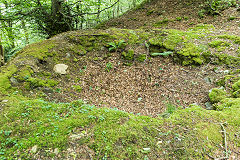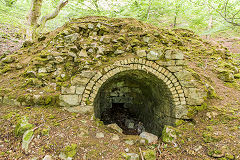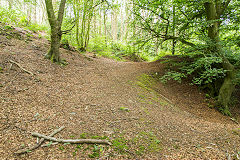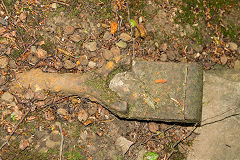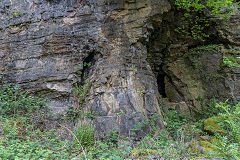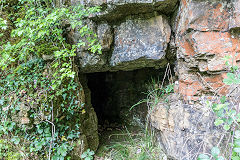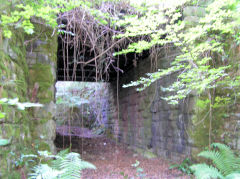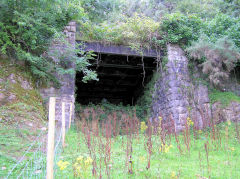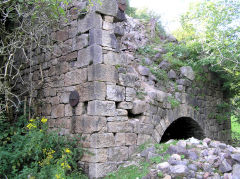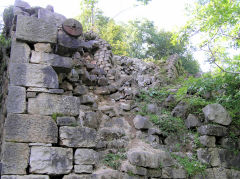The Industrial Archaeology and History of the Eastern Valley
Or click on the button to go to :-
Click on the thumbnail to enlarge a photo or map and sometimes read more about it.
Then click 'Full Size' on the toolbar to see it in all its glory.
Talywain
Abersychan (Twyn-y-ffrwd) incline - SO 2700 0390 to SO 2629 0403
The Abersychan (Twyn-y-ffrwd) incline ran from the MRCC tramway in Abersychan to Talywain. It was a standard-gauge incline opened around 1858 and shown as 'old' by 1902 to replace the tramway which followed the route of the B4246 to The British. Most of the incline can still be followed as a public footpath or a rough track. The bottom has been lost under the main road but the incline top area is still well-defined. The line from incline top to The British crossed the LNWR on the surviving bridge (SO 2610 0423) and sidings are still shown as still in use up to 1953.
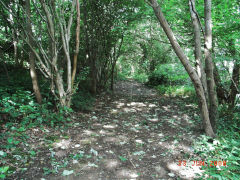
Abersychan incline, lower section
|
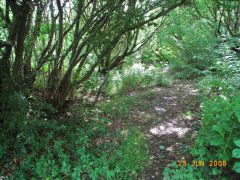
Abersychan incline, lower section
|
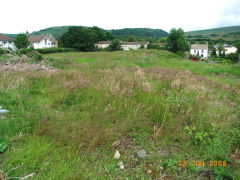
Abersychan incline top
|
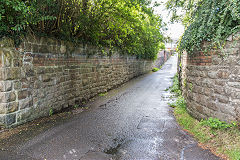
Incline sidings tunnel
|
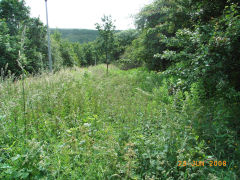
Abersychan incline looking down
|

Incline top, bridge over LNWR
|
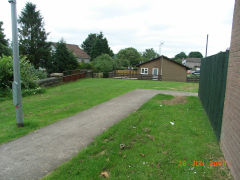
Incline top, bridge over LNWR
|

Viaduct and Incline, c1981
|
Around Talywain
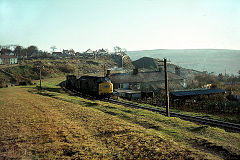
Garndiffaith Junction, 1969
|
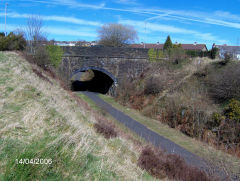
LNWR Commercial Road bridge
|

Farm Road bridge abutments
|
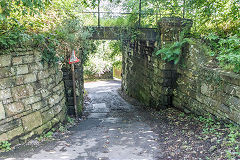
Harpers Road lane LNWR bridge
|
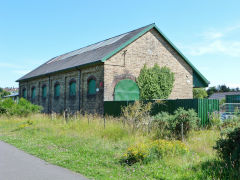
LNWR goods shed, Talywain
|

LNWR goods shed, Talywain
|
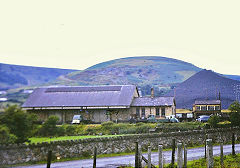
LNWR goods shed, Talywain
|
|
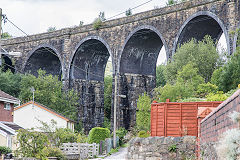
Talywain Viaduct
|

Talywain Viaduct from the incline
|
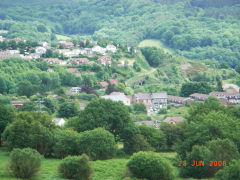
Talywain Viaduct from Cwmsychan
|
|
Andy Coldridge took this panorama of the viaduct in 1981 or 1982

Talywain Viaduct, c1981
|
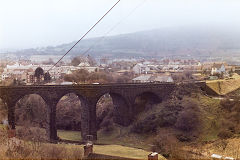
Talywain Viaduct, c1981
|
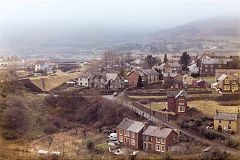
Talywain Viaduct, c1981
|

Talywain Viaduct, c1981
|
Cwm Ffwrd
The Cwm Ffrwd valley was the home of John Vipond's Lower Varteg Colliery, a long-lived complex of mines, which have been landscaped out of recognition. However, the 1899 adit has been restored with a couple of drams in front. It can be found at SO 2558 0493 but is rather hidden and out of context in a dip in the ground. The filled-in girder bridge that takes the lane over the colliery branchline is at SO 2572 0473.
Further up the valley there was a long stone-built culvert under the spoil tips (SO 2508 0537). This has partly collapsed but the lower end contains iron hoop reinforcements.
Lower Varteg Colliery
The Cwm Ffrwd valley was the home of John Vipond's Lower Varteg Colliery, a long-lived complex of mines, which have been landscaped out of recognition. However, the 1899 adit has been restored with a couple of drams in front. It can be found at SO 2558 0493 but is rather hidden and out of context in a dip in the ground. The filled-in girder bridge that takes the lane over the colliery branchline is at SO 2572 0473.
Further up the valley there was a long stone-built culvert under the spoil tips (SO 2508 0537). This has partly collapsed but the lower end contains iron hoop reinforcements.
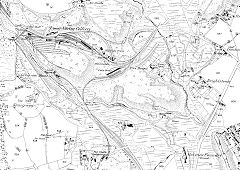
Lower Varteg Colliery, 1880
|
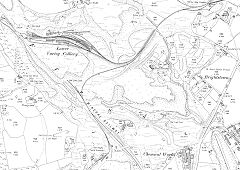
Lower Varteg Colliery, 1901
|
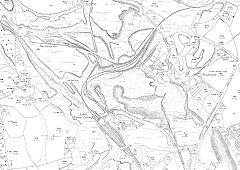
Lower Varteg Colliery, 1920
|
|
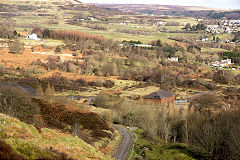
Golynos and Garndiffaith
|
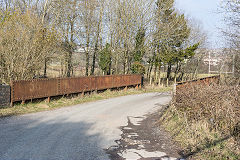
Lower Varteg GWR branch bridge
|
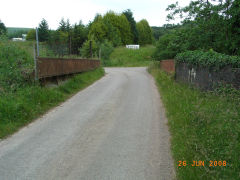
Lower Varteg GWR branch bridge
|

Lower Varteg GWR branch bridge
|
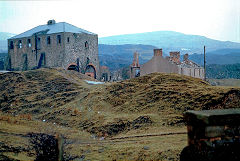
Lower Varteg Colliery c1968
|

Lower Varteg Colliery c1968
|
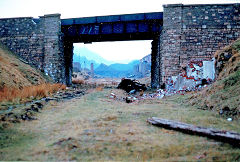
Lower Varteg Colliery c1968
|
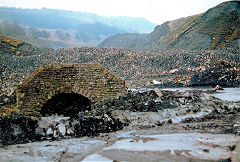
Lower Varteg Colliery c1968
|
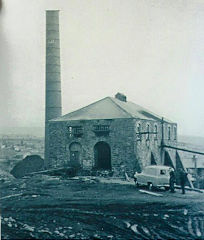
Lower Varteg Colliery
|
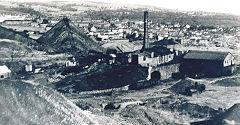
Lower Varteg Colliery
|
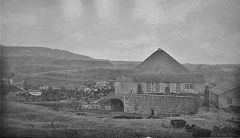
Lower Varteg Colliery
|
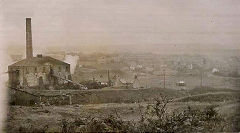
Lower Varteg Colliery
|
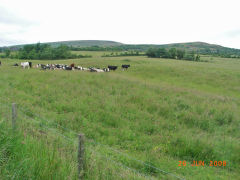
Lower Varteg Colliery site
|
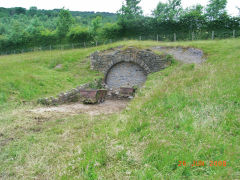
Lower Varteg Colliery level
|

Lower Varteg Colliery level
|
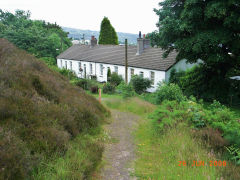
Lower Varteg Colliery stables
|
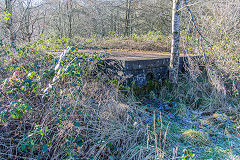
The air shaft of Deakins Slope
|

Lower Varteg Colliery tips
|
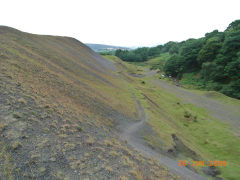
Lower Varteg Colliery tips
|

Lower Varteg Colliery tips
|

Lower Varteg Colliery tips
|

Culvert at Lower Varteg Colliery
|
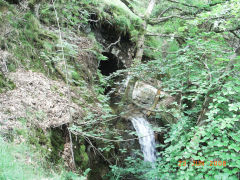
Culvert at Lower Varteg Colliery
|
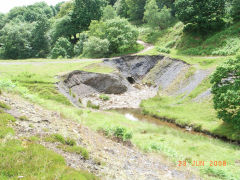
Culvert at Lower Varteg Colliery
|
Graig Wen and Graig Ddu - SO 2528 0500
There were two levels behind the now-demolished 'Graig Wen House' followed by an area of quarrying with a third level and an unmarked boundary stone at the end of the straight lane, which seems regular enough to have been a tramway. As the lane climbs towards to the 1980s Graig Wen Colliery an overgrown pond and watercourse can be traced heading back downhill towards The British Ironworks. Further on, the Graig Ddu farmhouse sits ruinously at the top of the track.

Cwm Ffrwd and Graig Wen, 1880
|
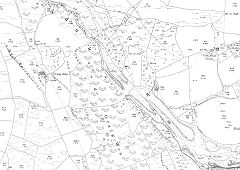
Cwm Ffrwd and Graig Wen, 1901
|

Graig Wen Farm
|
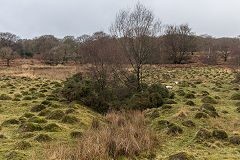
Graig Wen House level 1
|

Graig Wen House level 1
|
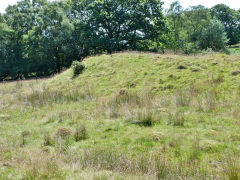
Graig Wen House level 1 tips
|
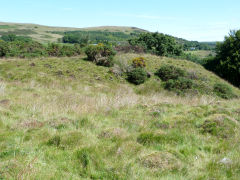
Graig Wen House level 2 tips
|
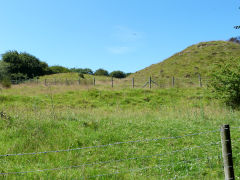
Graig Wen House levels tips
|
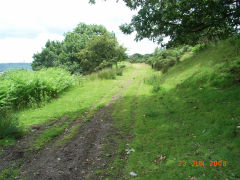
Access lane to Graig Wen levels
|
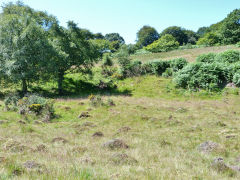
Graig Wen House quarry area
|
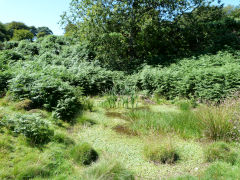
Graig Wen House quarry area
|
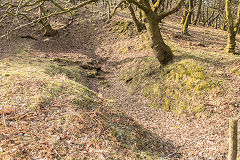
Graig Wen quarry level
|
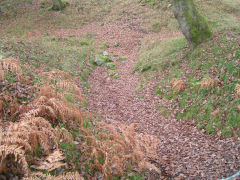
Graig Wen quarry level
|

Reservoir or water course
|

Reservoir or water course
|
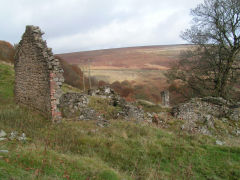
Graig Ddu Farm
|
Graig Wen Colliery - SO 2485 0521
Graig Wen Colliery opened in 1980 and had closed by 1987. Both levels are visible along with the course of the double track tramway between them which was built to 2'9" gauge.
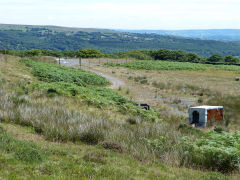
Graig Wen Colliery, view over site
|
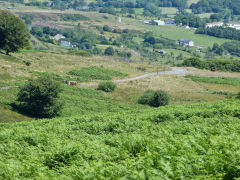
Graig Wen Colliery, view over site
|

Graig Wen Colliery, metal box
|

Graig Wen Colliery, metal box
|

Graig Wen Colliery, Eastern level
|
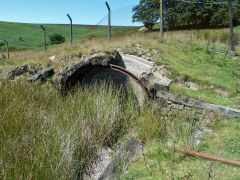
Graig Wen Colliery, Eastern level
|
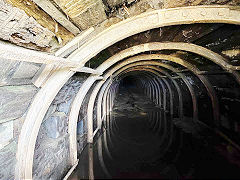
Graig Wen Colliery, Eastern level
|

Graig Wen Colliery, Eastern level
|
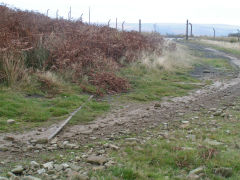
Colliery trackbed between levels
|
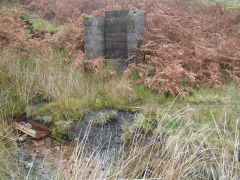
Colliery trackbed between levels
|
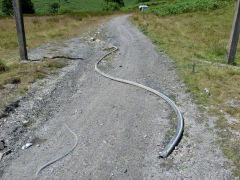
Colliery trackbed between levels
|
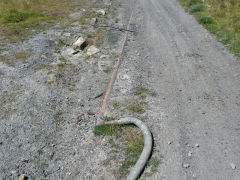
Colliery trackbed between levels
|
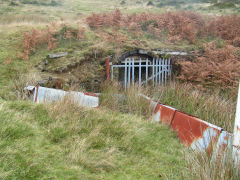
Graig Wen Colliery, Western level
|
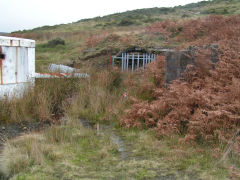
Graig Wen Colliery, Western level
|
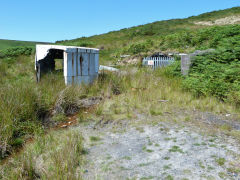
Graig Wen Colliery, Western level
|
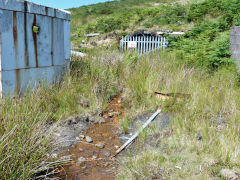
Graig Wen Colliery, Western level
|
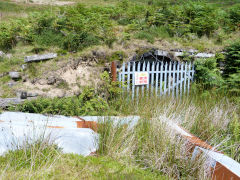
Graig Wen Colliery, Western level
|
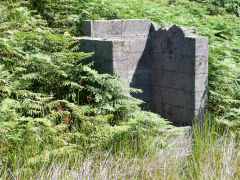
Graig Wen Colliery, Western level
|

Graig Wen Colliery, Western level
|

Graig Wen Colliery, Western level
|
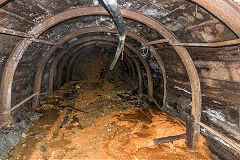
Graig Wen Colliery, Western level
|
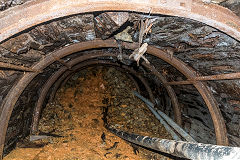
Graig Wen Colliery, Western level
|
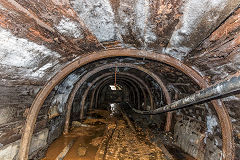
Graig Wen Colliery, Western level
|
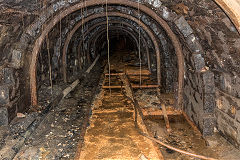
Graig Wen Colliery, Western level
|
Blaengaefog rifle range - SO 2400 0538
There is a most unusual Markers Hut at this rifle range, it looks like an upturned boiler of some kind, he was a brave man, that marker, whoever he was!
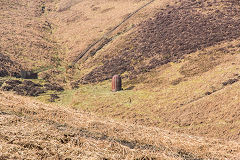
Blaengaefog rifle range
|
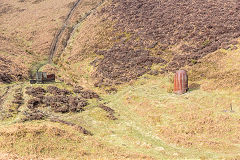
Blaengaefog rifle range
|
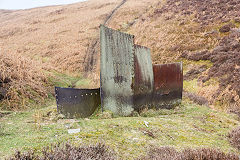
Blaengaefog rifle range
|
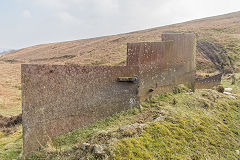
Blaengaefog rifle range
|
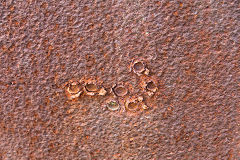
Blaengaefog rifle range
|

Blaengaefog rifle range
|

Blaengaefog rifle range
|
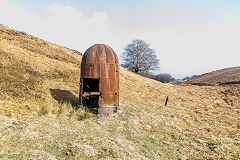
Blaengaefog rifle range
|
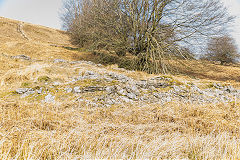
Blaengaefog rifle range
|
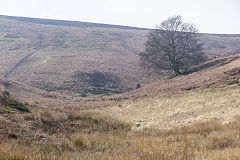
Blaengaefog rifle range
|
|
|
Waun Wen Boundary Markers
Waun Wen Boundary Markers
These boundary markers are scattered over Waun Wen above Graig Wen Colliery. 'W&BM' stands for Wentsland and Bryngwyn Manor but what does 'AM' and 'ABM' signify? Aberystruth or Brynmawr, perhaps? If you happen to know, please let me know, too. The '1896 No4' suggests that Nos 1 -3 are lurking up here somewhere. John Matthews has come up with more iron markers as well as some stone examples.
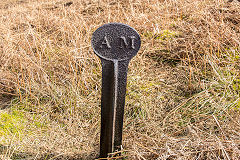
Boundary marker, 'AM'
|
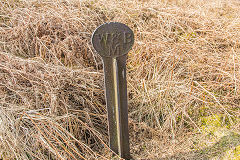
Boundary marker, 'W&BM'
|
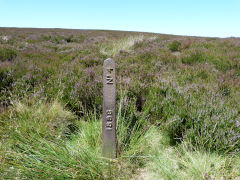
Boundary marker, '1896 No 4'
|
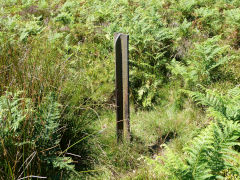
A headless 'W&BM', Waun Wen
|
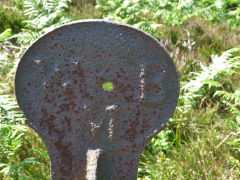
'W&BM', Waun Wen
|
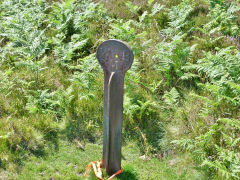
'W&BM', Waun Wen
|
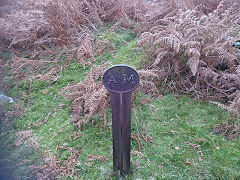
Boundary marker, 'AM'
|
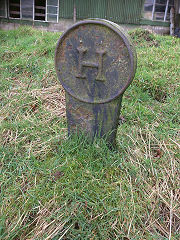
Boundary marker, 'H'
|
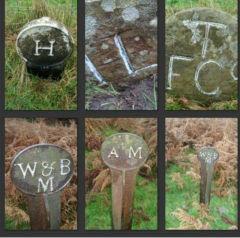
Boundary markers, Waun Wen
|
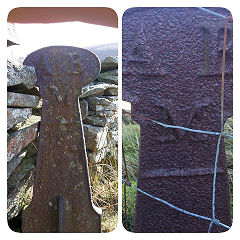
Boundary marker, 'ABM'
|
|
|
Varteg Hill Colliery and Cwm Glo Colliery
Varteg was the other centre of John Vipond's operations, based around the 3 mile long branch from the LNWR at Blaenavon Junction to Varteg Hill Colliery Top Pits. The trackbed is now a well-established track and can be easily followed from the Varteg Road. The reservoir of the Pontypool Gas and Water Co, opened by 1902, is the first site to be met on the right (SO 2629 0681).
Varteg Zigzag Railway
The zig-zag railway linked Varteg Hill Colliery to Lower Varteg Colliery through a series of 5 reverses. It was built before 1917 after which the LNWR line to Blaenavon probably fell out of use. Originally it started with a tight loop but this was later changed to another reverse .
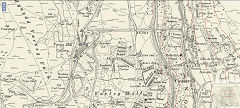
Zigzag upper route in 1917
|
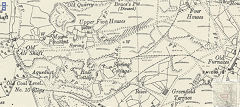
Zigzag upper route 1948
|
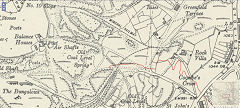
Zigzag middle route 1948
|
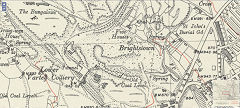
Zigzag lower route 1948
|
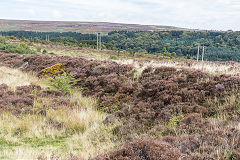
Varteg Zigzag Railway, Top level 0
|

Varteg Zigzag Railway, Top level 1
|

Varteg Zigzag Railway, Top level 1
|
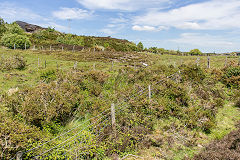
Varteg Zigzag Railway, Top level 1
|
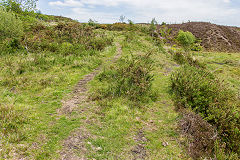
Varteg Zigzag Railway, Top level 1
|
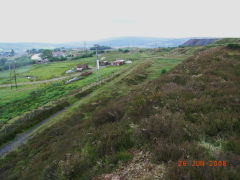
Varteg Zigzag Railway, Top level 1
|
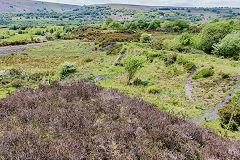
Level 1 down to level 2 on left
|
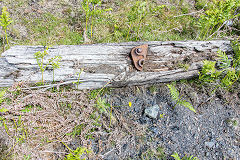
Level 2 sleeper
|
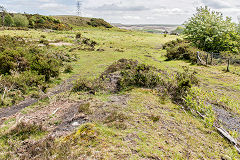
Level 2 down to level 3 on right
|
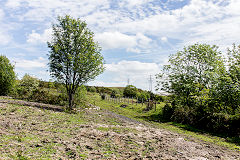
Level 3 towards level 2
|

Level 3 on left, level 2 on right
|
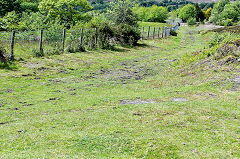
Level 3 towards level 4
|
Varteg Incline - SO 2617 0640
Viponds incline ran from the colliery down to the MRCC at Cwmavon. It can be followed as far as the information point on the Varteg Road after which it is heavily overgrown. 100 yards below the top of the incline the first stage of the zig-zag railway crosses it on the way down to Talywain.
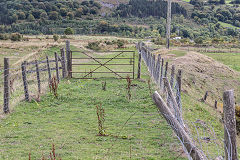
Varteg Incline looking down
|
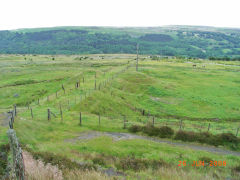
Varteg Incline looking down
|
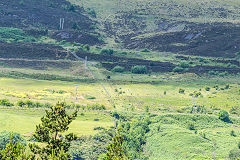
Varteg Incline from Lasgarn
|
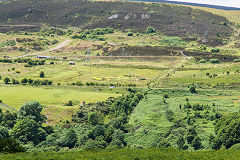
Varteg Incline from Lasgarn
|
Cwm Glo Colliery - SO 2616 0628
A little further along in a dip is the green corrugated adit shed of Cwm Glo Colliery (or Cwm-y-Glo Colliery) which was active from 1992 to 1997. Until 2008 the haulage engine and compressor building was still standing but has now gone. The screens, loading dock, rails and safety brake can be found but the site is slowly being stripped.
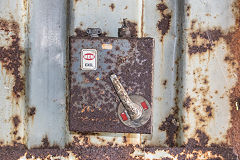
Cwm Glo Colliery switchgear
|
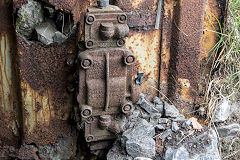
Cwm Glo Colliery switchgear
|
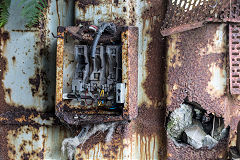
Cwm Glo Colliery switchgear
|
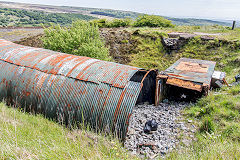
Cwm Glo Colliery, Varteg Hill
|
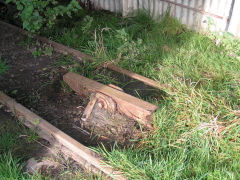
Cwm Glo Colliery safety brake
|
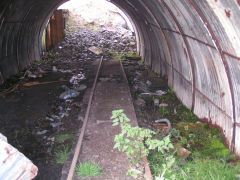
Cwm Glo Colliery, Varteg Hill
|
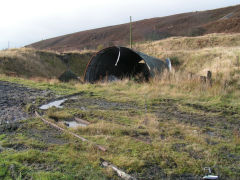
Cwm Glo Colliery, Varteg Hill
|
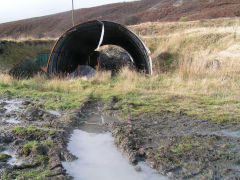
Cwm Glo Colliery, Varteg Hill
|
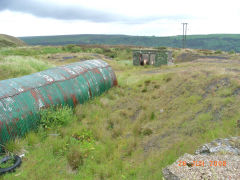
Cwm Glo Colliery, Varteg Hill
|
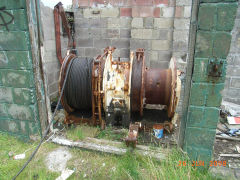
Cwm Glo Colliery, Varteg Hill
|
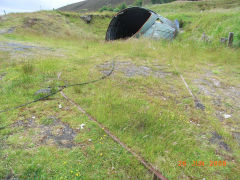
Cwm Glo Colliery, Varteg Hill
|
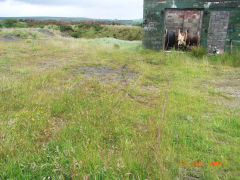
Cwm Glo Colliery, Varteg Hill
|
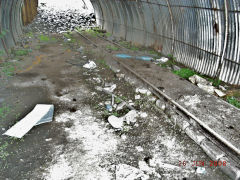
Cwm Glo Colliery, Varteg Hill
|
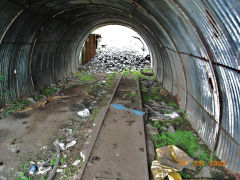
Cwm Glo Colliery, Varteg Hill
|
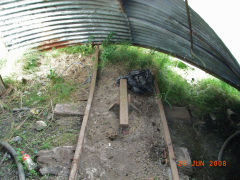
Cwm Glo Colliery, Varteg Hill
|

Cwm Glo Colliery, Varteg Hill
|
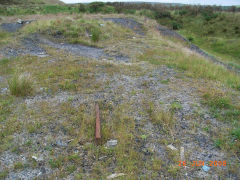
Cwm Glo Colliery, Varteg Hill
|
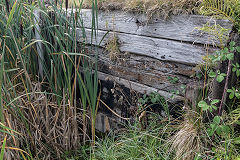
Cwm Glo Colliery lower level
|
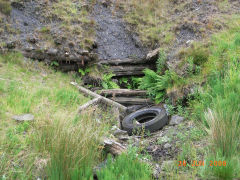
Cwm Glo Colliery lower level
|
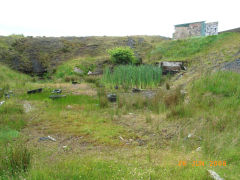
Cwm Glo Colliery lower level
|
Varteg Hill Colliery - SO 2606 0621
The area known as 'The Lighthouse' has foundations, pits and walls along with multi-coloured extensive tips. These are the remains of the washery and engine sheds that served the many mines in the area. To the North along a long tramway were Mine Slope and New Slope (originally Varteg Slope) and Waun Hoskins Slope, all buried by opencast workings.. A branch from New Slope ran up an incline to the Ventilating Fan, an old trial shaft. The top end of the incline survives.
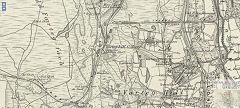
Varteg Hill Colliery in 1880
|
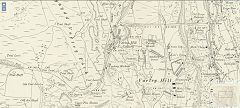
Varteg Hill Colliery in 1899
|

Varteg Hill Colliery in 1917
|
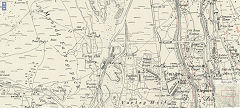
Varteg Hill Colliery in 1948
|
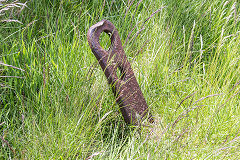
Varteg Colliery ironmongery
|
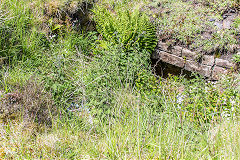
Varteg Colliery shaft
|

Unknown building
|

Varteg Arch under the railway
|
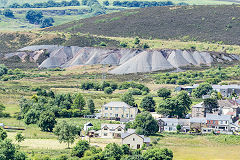
Varteg Colliery tips
|
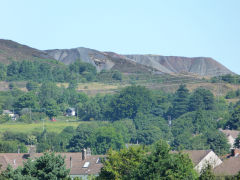
Colliery tips from Talywain
|

Varteg Colliery tips
|
|
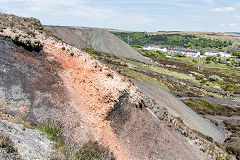
Varteg Colliery tips
|
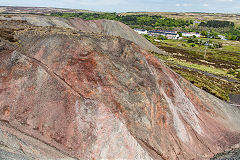
Varteg Colliery tips
|
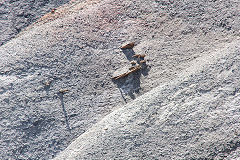
Varteg Colliery tips
|
|
Ventilating Fan - SO 2557 0678
To the North of the railway were Mine Slope, New Slope and Waun Hoskins Slope, all buried by opencast workings. A small reservoir and the earthworks of a ventilating fan with a short but solid incline embankment below it have survived.

Ventilating fan shaft incline
|
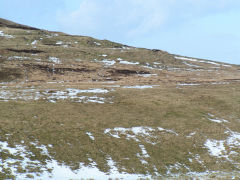
Ventilating fan shaft site
|
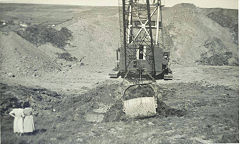
Opencast operations on Varteg Hill
|
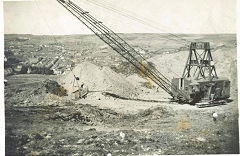
Opencast operations on Varteg Hill
|
Varteg Village
Cwm Ffrwd Tramroad and its two inclines
Original incline - SO 2668 0566
At the end of Gladstone Terrace are the foundations of the engine house for the original plateway incline of c1802 down to the Blaenavon Railroad.
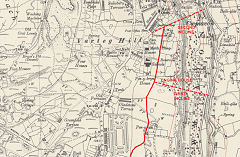
Cwm Ffrwd inclines
|

Tramroad to 1st incline
|
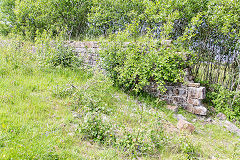
Incline engine house
|

Incline engine house
|
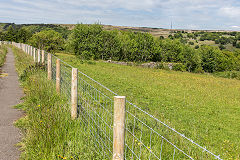
Incline engine house
|
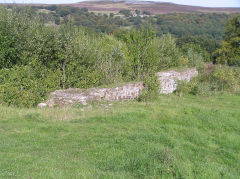
Incline engine house
|

Cwm Ffrwd incline top
|
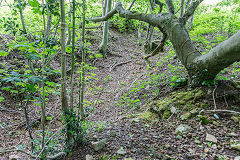
Incline below engine house
|
Second incline - SO 2664 0600
The second incline ran down from the appropriately named Incline Row in Varteg village.

Stench pipe next to tramroad
|
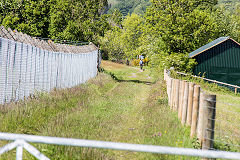
Course of tramroad to 2nd incline
|
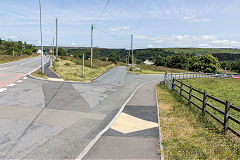
Cwm Ffrwd second incline top
|
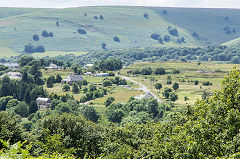
Cwm Ffrwd second incline
|
Varteg Ironworks and Four Houses - SO 2627 0578
In the field to the South of the site of 'Four Houses' a substantial stone wall exists with a large iron reinforcing plate. This was the site of the Varteg Iron Co's furnaces and the stone work is probably part of it. Varteg Furnaces were built in 1802 and after a few changes to the owning partnerships the works were out of use by 1843 when the site seems unsuccessfully put up for auction. The site came into the possession of Partidge Jones in 1864 but whether they used it as an ironworks is doubtful. The 1879 OS map shows site cleared and called 'Old Furnaces'.
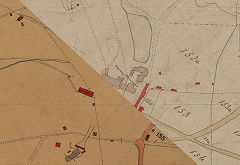
Varteg Ironworks in 1843
|
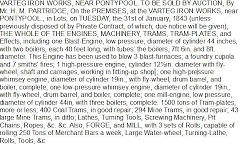
Varteg Ironworks auction, 1843
|
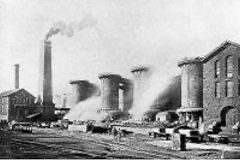
Varteg Ironworks c1870s
|

Foundations of Four Houses
|
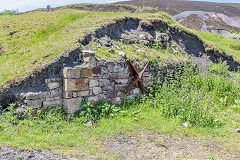
Stonework from Varteg Furnaces
|
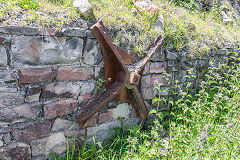
Stonework from Varteg Furnaces
|
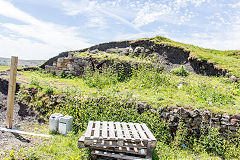
Stonework from Varteg Furnaces
|
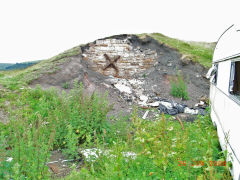
Stonework from Varteg Furnaces
|

Tramroad sill, approx 2'6" gauge
|

Tips to South West
|
|
|
LNWR Varteg Station and bridges - SO 2683 0603
The iron bridge carries 'Snail Creep', the footpath over the railway trackbed which provided access to the station. The platform is on the Western side and there are the ruins of part of the station buildings. Further up, an intricate and sloping iron bridge carries Shop Lane over the LNWR at SO 2674 0623. Next, the stone abutments of the bridge over the LNWR (SO 2669 0640) carried the Varteg Incline down to GWR.
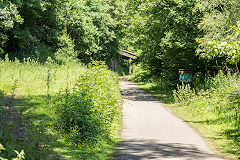
Varteg LNWR station
|
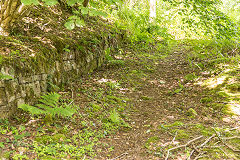
Varteg LNWR Station footpath
|
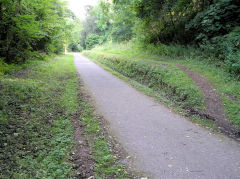
Varteg LNWR Station
|

Varteg LNWR Station building
|
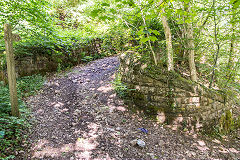
Snail Creep bridge, Varteg
|
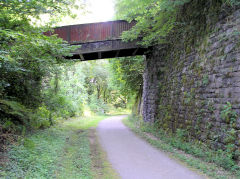
Snail Creep bridge, Varteg
|

Snail Creep bridge, Varteg
|
|
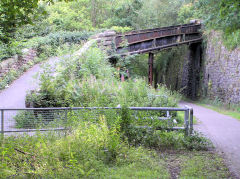
Shop Road bridge, Varteg
|
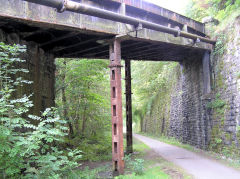
Shop Road bridge, Varteg
|

Shop Road bridge, Varteg
|
|
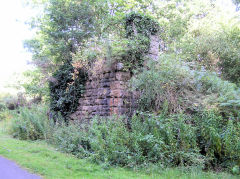
Varteg incline abutments
|
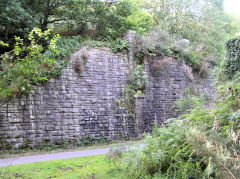
Varteg incline abutments
|
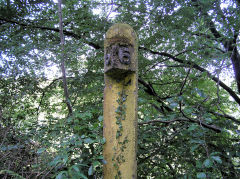
Varteg Incline milepost
|
|
Upper Five Houses

Upper Five Houses, Varteg
|

Upper Five Houses, Varteg
|
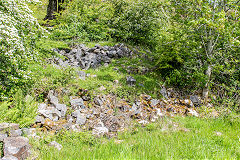
Upper Five Houses, Varteg
|
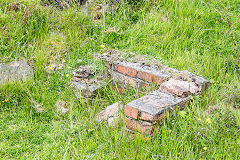
Upper Five Houses, Varteg
|
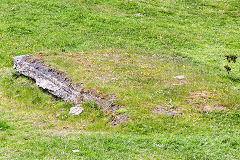
Foundations at Upper Five Houses
|
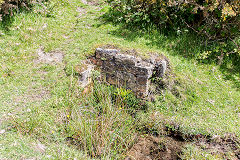
Stonework at Upper Five Houses
|

Tips at Upper Five Houses
|
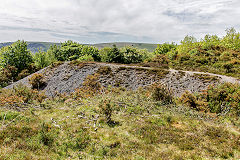
Tips at Upper Five Houses
|
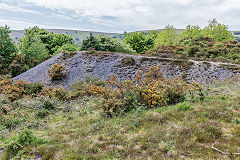
Tips at Upper Five Houses
|
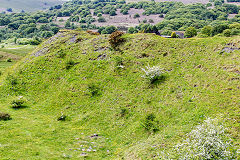
Tips at Upper Five Houses
|
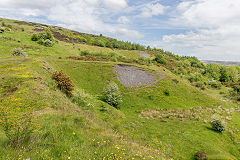
Tips at Upper Five Houses
|
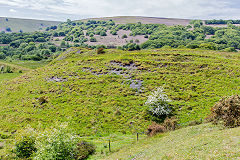
Tips at Upper Five Houses
|
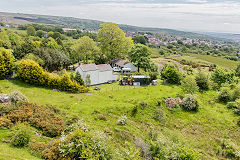
Spring Cottage from tips
|
|
|
|
Around and about Varteg
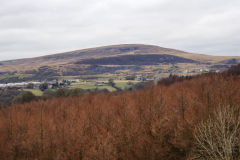
Varteg from the Lasgarn tramway
|

Stonework near Pembroke Terrace
|
|
|
Acknowledgments, sources and further reading.
Thanks to John Matthews for providing some more boundary markers and to Andy Coldridge, Gwyn Jenkins, Graham Morley, Richard Morgan,
Alan Murray-Rust and Steve Thomas for addition photos and information.
Graig Wen Colliery has a chapter in 'Small Mines of South Wales' Vol 1 by Adrian Booth from the Industrial Railway Society.
A Guide to the Website
Industrial Wales
Collieries, Ironworks, Quarries, Railways, Canals, Tramroads, Tunnels, Culverts and so much more....
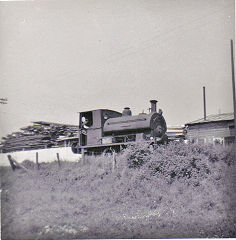
|
Brickworks of Wales
Bricks are 'History with a label' so here's the story of the Brickworks of Wales - photos, maps and the products themselves
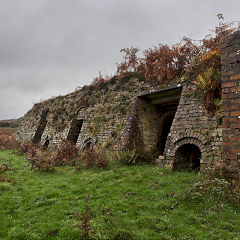
|
Around the World
My travels around the UK and the Whole Wide World in search of industries, railways, trams and mines to name a few.
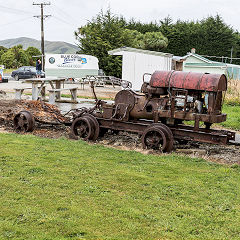
|
Boundary Stones and Mileposts
Boundary Stones, Mileposts and other markers in simple alphabetical order of their initials, name or site.

|
Ships and Shipping
Ships around the World in simple alphabetical order of their name (or apparent area if I can't read the name).

|
The Site Map and Index
A full list of all the pages of the whole website in just one place, so you should find exactly what you are looking for.

|
About the Site
The background and technical details about the site, plus a contact page and links to other sites - and a warning !!
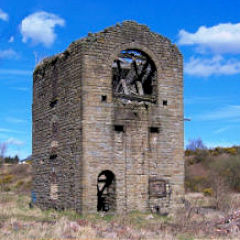
|
Contact Me
Something to add? A great photo? Something wrong? or need to know more about things? Just drop me a line here.

|
Further Reading
You can find lots of local and other very helpful websites, books, magazines and Facebook groups all listed here.
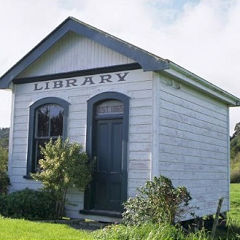
|
All rights reserved - Phil Jenkins




























